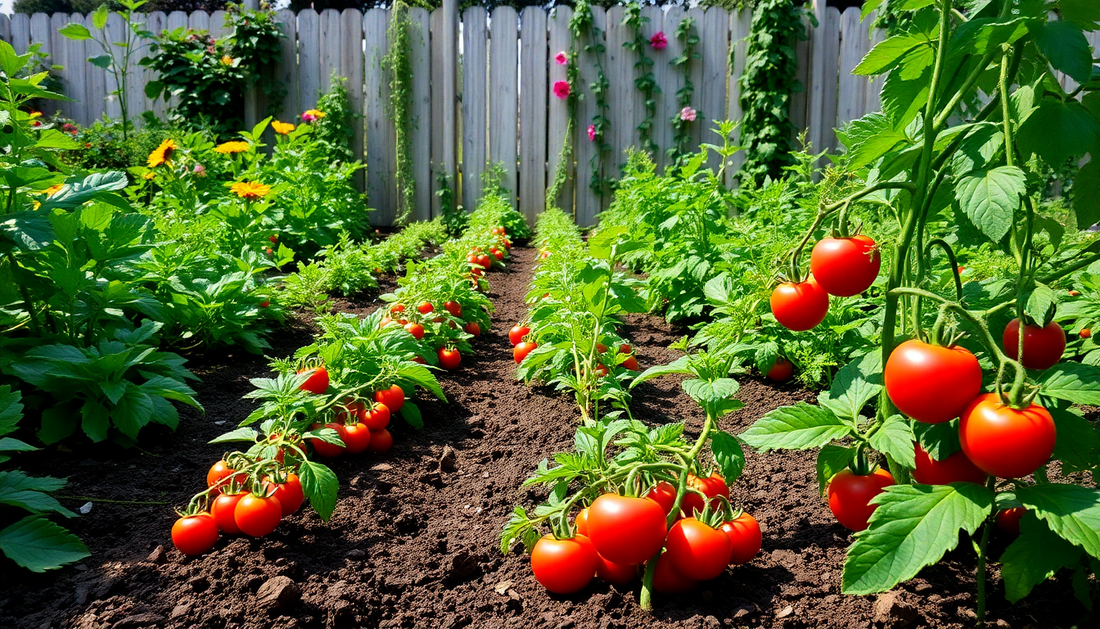
How to Start a Vegetable Garden from Scratch
Share
Starting a vegetable garden can be a rewarding and fulfilling experience, providing you with fresh, nutritious produce right at your fingertips. Whether you have a small backyard or a spacious plot of land, creating a thriving vegetable garden is within reach. In this comprehensive guide, we'll walk you through the steps to establish a successful vegetable garden from scratch.
Choosing the Right Location
The first step in starting a vegetable garden is to select the perfect location. Vegetables thrive in areas that receive at least six hours of direct sunlight per day, so choose a spot that is not heavily shaded by trees or buildings. Additionally, consider the soil quality and drainage in the area. Vegetables prefer well-draining, nutrient-rich soil, so avoid areas that tend to become waterlogged or have poor soil composition.
Assessing Soil Quality
Healthy soil is the foundation of a successful vegetable garden. To assess your soil's quality, you can perform a simple soil test. This will help you determine the pH level, nutrient content, and any deficiencies that need to be addressed. Many local extension services or gardening centers offer soil testing kits or services that can provide you with a detailed analysis of your soil.
If your soil is lacking in certain nutrients or has an imbalanced pH, you can amend it by adding organic matter, such as compost or well-rotted manure. This will improve the soil's structure, water-holding capacity, and nutrient content, creating an ideal environment for your vegetables to thrive.
Planning Your Garden Layout
Once you've selected the perfect location and prepared the soil, it's time to plan your garden layout. Decide which vegetables you want to grow and group them according to their growing requirements, such as sun exposure, water needs, and maturity times. This will help you maximize the use of your garden space and ensure that all your plants receive the necessary care.
Raised Beds or In-Ground?
Another important decision to make is whether to create raised beds or plant directly in the ground. Raised beds offer several advantages, such as improved drainage, easier access, and better soil quality. They also allow you to control the soil composition more easily. If you opt for in-ground planting, be sure to amend the soil accordingly and consider adding a layer of mulch to retain moisture and suppress weeds.
Choosing Your Vegetables
The next step is to select the vegetables you want to grow. Consider your personal preferences, the climate in your region, and the growing season. Some popular choices for beginner vegetable gardeners include tomatoes, peppers, lettuce, carrots, and zucchini. Be sure to choose varieties that are well-suited to your local conditions and have a high likelihood of success.
Seed Starting or Transplants?
You can start your vegetables from seed or purchase transplants from a local nursery or garden center. Starting from seed can be more cost-effective and allow you to experiment with a wider variety of vegetables, but it requires more time and effort. Transplants, on the other hand, give you a head start and are often easier to manage, especially for beginner gardeners.
Planting and Caring for Your Vegetables
Once you've selected your vegetables and prepared your garden, it's time to start planting. Follow the instructions on the seed packets or transplant labels for proper planting depth, spacing, and care. Be sure to water your plants regularly, especially during the establishment phase, and consider using a drip irrigation system or soaker hoses to conserve water.
Weed and Pest Control
Weeds can quickly take over your garden, competing with your vegetables for nutrients, water, and sunlight. Regularly remove weeds by hand or use a hoe to keep your garden tidy. Additionally, be on the lookout for pests, such as aphids, slugs, or caterpillars, and take appropriate action to protect your plants. Organic pest control methods, such as introducing beneficial insects or using natural repellents, can be effective and environmentally friendly.
Harvesting and Enjoying Your Bounty
As your vegetables mature, it's time to start harvesting. Regularly check your plants and pick your produce at the optimal time for maximum flavor and nutrition. Many vegetables, such as lettuce, tomatoes, and zucchini, will continue to produce throughout the growing season if you regularly harvest them.
Preserving and Storing Your Harvest
To make the most of your vegetable garden, consider preserving or storing your harvest. You can freeze, can, or dehydrate your produce to enjoy it long after the growing season has ended. This will allow you to savor the flavors of your homegrown vegetables all year round.
Starting a vegetable garden from scratch can be a rewarding and fulfilling experience. By following these steps, you'll be well on your way to creating a thriving, productive garden that will provide you with a bountiful harvest of fresh, nutritious vegetables. Remember to be patient, experiment, and enjoy the process – the rewards of homegrown produce will be well worth the effort.
